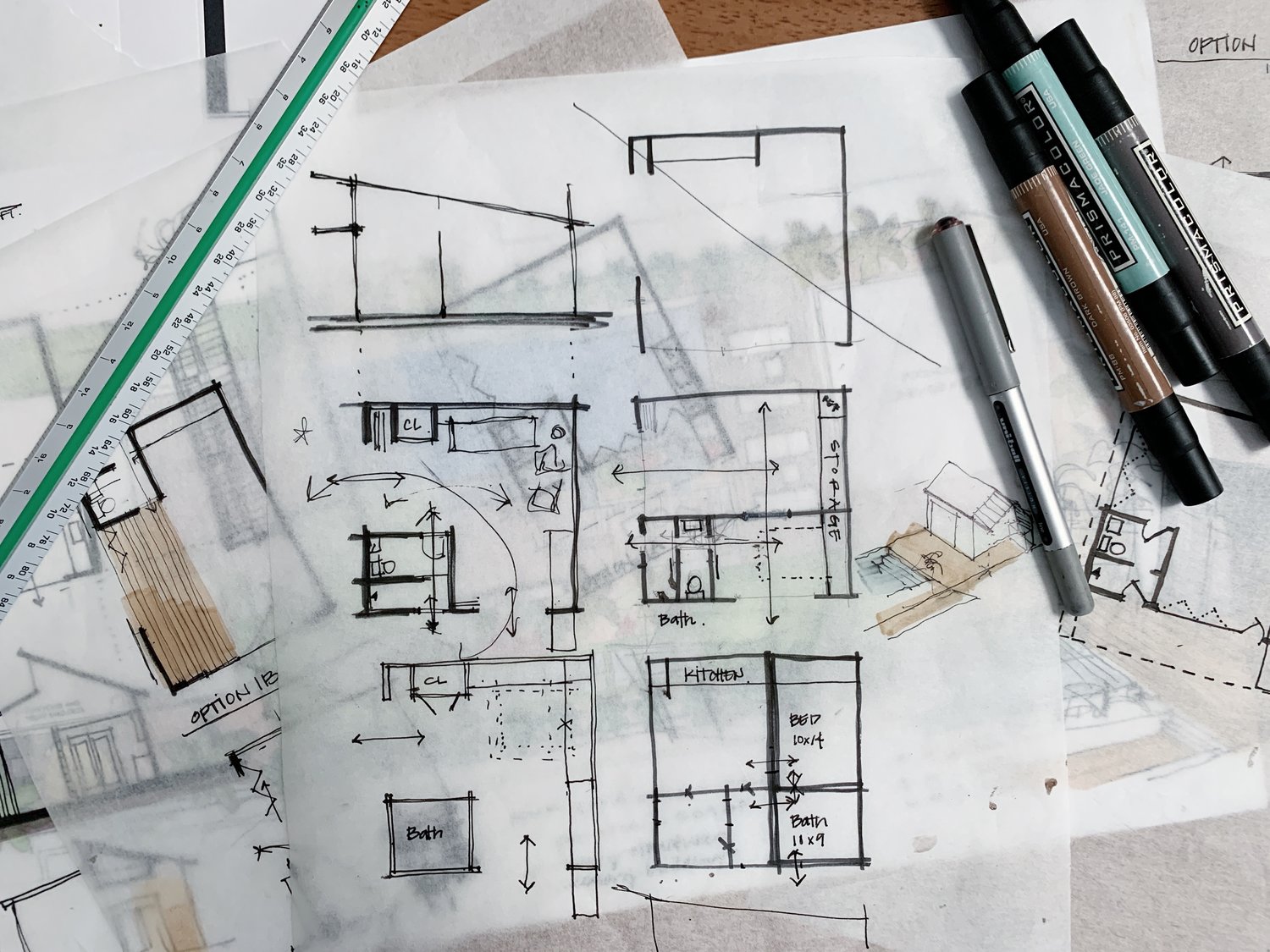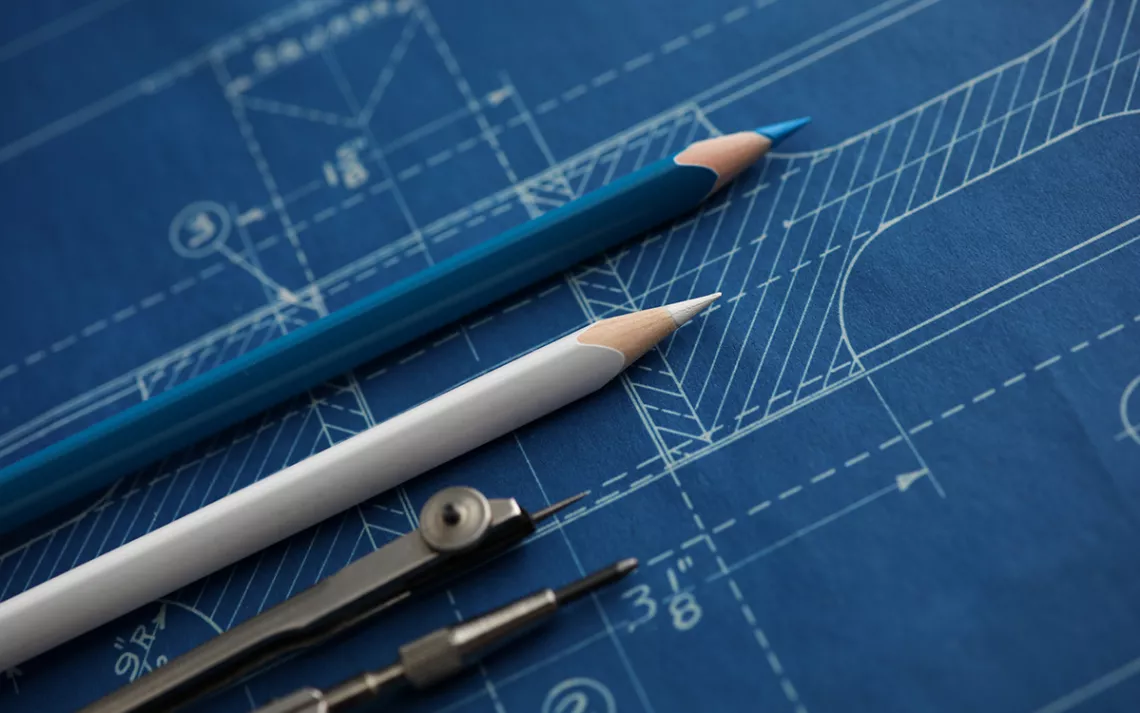Architect Guide to Sustainable Building Materials
Architect Guide to Sustainable Building Materials
Blog Article
Comprehending the Diverse Career Paths Available for Aspiring Architect
As a hopeful Architect, you have a globe of profession courses waiting for you. Each course offers one-of-a-kind challenges and possibilities to apply your creativity and technological know-how. Whether you're attracted to standard architecture or the nuances of lasting style, there's a specific niche that lines up with your rate of interests. Recognizing these diverse choices can shape your professional journey, but which instructions will you select to check out first?
Standard Style: Designing Structures and buildings
Standard design concentrates on creating structures and frameworks that mix functionality with aesthetic appeal. Your styles can show cultural heritage, showcasing neighborhood traditions while satisfying modern demands.
You'll develop abilities in preparing, model-making, and site analysis, allowing you to imagine and communicate your concepts properly. Involving with clients, you'll need to understand their vision and convert it right into practical styles.
Additionally, building codes and sustainability practices are vital in your work, guaranteeing your structures are risk-free and eco-friendly. As you grow in your profession, you'll discover chances in residential, commercial, or even reconstruction projects, each offering one-of-a-kind obstacles. Accepting conventional architecture leads the way for a fulfilling profession that admires the past while forming the future.
Urban Planning: Forming Neighborhoods and Public Spaces
As an aspiring Architect, you can play a crucial duty as a metropolitan organizer, changing how areas connect and work. By using community involvement techniques, you'll assure that citizens have a voice in shaping their environment. And also, incorporating sustainable style concepts will assist produce areas that not only satisfy today's requirements but likewise shield the future.
Role of Urban Planners
While several might think about engineers as the sole enthusiasts behind structures, metropolitan organizers play a necessary role fit the wider landscape of areas and public spaces. They evaluate land use, zoning regulations, and area needs to create sustainable atmospheres that boost quality of life. By working together with numerous stakeholders, you'll aid design parks, transportation systems, and houses that promote social communication and ease of access. Urban organizers likewise focus on ecological considerations, guaranteeing that growths incorporate green spaces and support biodiversity. Your competence in spatial design and neighborhood characteristics allows you to imagine future development while preserving cultural heritage. In this crucial role, you'll directly influence exactly how individuals experience their surroundings, making every job an opportunity for favorable modification.
Community Involvement Approaches
Reliable community engagement methods are essential for urban coordinators to ensure that the voices of citizens are listened to and valued in the preparation procedure. To cultivate purposeful discussion, you must prioritize open discussion forums and workshops where neighborhood participants can reveal their ideas and problems. By actively listening and integrating comments, you'll develop rooms that mirror the area's demands, inevitably leading to even more successful and sustainable metropolitan environments.
Lasting Style Concepts
When designing city spaces, incorporating lasting layout concepts is important for producing atmospheres that prosper both environmentally and socially. You ought to start by focusing on energy efficiency, using materials that decrease waste and promote recycling. Think about incorporating environment-friendly spaces, like parks and gardens, to boost biodiversity and enhance air high quality. Advertising walkability and public transportation can decrease dependence on cars and trucks, cultivating a much healthier community.
Creating with water preservation in mind is additionally key-- believe about rainfall yards and absorptive surfaces to manage stormwater. Including community participants during the planning process warranties that the rooms you produce fulfill their needs and urge social interaction. By embracing these principles, you'll add to lively, lasting metropolitan landscapes that profit everybody.

Landscape Design: Producing Lasting Exterior Atmospheres
As you check out landscape design, you'll uncover necessary style concepts that produce stunning and functional outdoor rooms. Sustainable techniques play a crucial role in ensuring these atmospheres thrive while decreasing environmental impact. And also, you'll find a range of career possibilities that allow you to make an actual difference in just how people connect with nature.
Design Concepts in Landscape
Understanding style concepts in landscape style is important for producing lasting exterior settings that harmonize with nature. You'll need to consider aspects like proportion, equilibrium, and range to ensure your layouts feel cohesive and inviting. Furthermore, pay attention to seasonal modifications, creating with materials that complement the environments year-round.
Lasting Practices Introduction
Sustainable techniques in landscape design not only concentrate on appearances yet additionally focus on eco-friendly health and resource conservation. You can make areas that advertise dirt health and wellness, such as using organic products and practicing permaculture principles. Ultimately, these methods ensure your styles benefit both individuals and the atmosphere for years to come.
Career Opportunities Exploration
With a strong foundation in sustainable methods, landscape style supplies a selection of career paths that allow you to make a significant effect on the setting. You can function as a landscape developer, producing cosmetically pleasing and useful exterior areas, or concentrate on eco-friendly reconstruction, aiding to revitalize broken ecosystems. Urban planners frequently collaborate with landscape architects to create environment-friendly rooms in city setups, improving city livability. If you're passionate about education, take into consideration coming to be a landscape style teacher, inspiring future generations. Additionally, you might function with nonprofits concentrated on environmental sustainability or engage in research to introduce new practices. Each path not just shapes lovely settings however also cultivates a much healthier world for future generations.
Lasting Design: Concentrating On Eco-Friendly Practices
As you explore your career in architecture, welcoming green techniques can set you apart in an affordable field. Lasting design concentrates on creating buildings that decrease environmental effect while improving owner wellness. By including sustainable products, energy-efficient systems, and sustainable building methods, you'll add to a greener future.
Start by getting knowledge of eco-friendly certifications like LEED or BREEAM, which can boost your qualifications. Consider exactly how all-natural light, air flow, and thermal efficiency can enhance layout. Collaborate with engineers and environmental professionals to introduce solutions that decrease waste and save sources.
Don't fail to remember the relevance of community involvement-- appealing neighborhood stakeholders can motivate designs that balance with the atmosphere. As customers increasingly prioritize sustainability, your proficiency in eco-friendly practices will certainly not just bring in projects but additionally satisfy your interest for responsible design. Accept this vital facet of the profession, and watch your profession thrive.
Historic Preservation: Safeguarding and Recovering Cultural Heritage
While you start on your architectural journey, consider the important role of historic conservation in keeping our social heritage. This field concentrates on the protection and restoration of significant buildings, websites, and frameworks that inform the stories of our past. By engaging check that in historic conservation, you'll aid guard the building heritage that forms neighborhood identity.
As a historical conservation Architect, you'll evaluate historic importance and assess the problem of structures. You'll function closely with preservationists and historians to assure authentic reconstruction methods are employed. This occupation path enables you to blend imagination with research, enabling you to design remedies that appreciate original products and craftsmanship.
Your work not just adds to sustainability by recycling existing buildings however likewise cultivates a sense of satisfaction within communities. Accepting this course will assist you come to be a guardian of history, maintaining the stories and next visual appeals that improve our lives.
Interior Design: Enhancing Indoor Spaces
Historical preservation and interior design both share a dedication to enhancing the developed setting, but they concentrate on various facets. While historic preservation highlights keeping a framework's historical and cultural worth, indoor style absolutely nos in on enhancing indoor spaces for functionality and appearances.
As an aspiring Architect, you'll discover that interior style permits you to mix imagination with technological abilities. You'll make rooms that not only look good but also promote comfort and effectiveness. This field includes recognizing just how light, shade, and products communicate within a space, impacting mood and functionality.
You'll work on different jobs, from property homes to industrial offices, making sure that each setting satisfies the requirements of its passengers. By prioritizing individual experience, you can transform interiors right into useful and motivating areas, making a substantial influence on exactly how people interact with their environments. Welcome the chance to improve indoor environments and form the method people live and work.
Industrial Style: Merging Performance With Looks
Commercial design plays a vital role in developing items that perfectly blend appearances with capability, guaranteeing that what you use day-to-day is not only visually enticing however additionally functional. As a hopeful Architect, you might engage yourself in this area, focusing on making whatever from furnishings to consumer electronic devices. Your work involves recognizing user requirements, products, and producing procedures, enabling you to create cutting-edge services that boost daily experiences.
In commercial layout, you'll often collaborate with engineers, online marketers, and makers, ensuring that your layouts are not just lovely but additionally possible. This career course supplies a vibrant environment where creativity fulfills usefulness, making it a satisfying option for architects interested in forming the products of tomorrow.
Frequently Asked Concerns
What Educational Credentials Do I Required to Become a Designer?
To end up being an architect, you'll need a professional degree in architecture, typically a Bachelor's or Master's. In addition, you'll have to complete a teaching fellowship and pass the Architect Enrollment Assessment to practice lawfully.
Are There Qualification Demands for Various Architectural Career Paths?
Yes, there're qualification demands web for numerous building paths. Architect. You'll require to pass exams, total teaching fellowships, and often pursue specialized training, depending upon your chosen emphasis, like landscape style, metropolitan layout, or historic conservation
What Software Application Abilities Are Vital for Architects Today?

Just How Can I Gain Practical Experience While Examining Architecture?
You can obtain functional experience by interning at architectural companies, participating in layout competitions, offering for community tasks, or collaborating with schoolmates on real-world projects. These possibilities improve your abilities and develop beneficial connections in the sector.
What Task Opportunities Exist Outside Typical Design Firms?
You can explore different work chances outside typical architecture companies, like city planning, interior layout, landscape architecture, building monitoring, genuine estate growth, or perhaps functions in sustainability consulting. Each deals one-of-a-kind challenges and incentives.
Whether you're attracted to traditional design or the subtleties of sustainable design, there's a particular niche that aligns with your rate of interests.When creating city spaces, integrating lasting layout concepts is essential for producing settings that grow both ecologically and socially.As you explore landscape architecture, you'll find necessary layout concepts that create useful and beautiful exterior rooms.Understanding style principles in landscape design is necessary for developing lasting exterior settings that integrate with nature.In commercial layout, you'll often collaborate with marketing experts, designers, and makers, making sure that your styles are not only beautiful but additionally practical.
Report this page